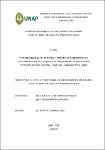| dc.contributor.advisor | Ramos Ruiz, Roberto | |
| dc.contributor.author | Ríos Gonzáles, Karen Lizeth | |
| dc.contributor.author | Ríos Moena, Celestina | |
| dc.date.accessioned | 2017-02-15T18:37:35Z | |
| dc.date.available | 2017-02-15T18:37:35Z | |
| dc.date.issued | 2016 | |
| dc.identifier.uri | http://repositorio.unapiquitos.edu.pe/handle/20.500.12737/4001 | |
| dc.description.abstract | El presente estudio estuvo orientado a resolver el siguiente problema de investigación: ¿Existe relación entre los programas televisivos y los niveles de agresividad en estudiantes del 3er. grado de secundaria de la Institución Educativa Experimental UNAP, San Juan Bautista - 2015? El objetivo de Investigación fue: Determinar la relación entre los programas televisivos y los niveles de agresividad en estudiantes del 3er. grado de secundaria de la Institución Educativa Experimental UNAP, San Juan Bautista - 2015. El tipo de investigación fue No experimental y se utilizó el diseño correlacional y transversal. La población objetivo de la investigación estuvo conformada por un todos los estudiantes del 3º Grado de Secundaria de la Institución Educativa Experimental UNAP, del distrito de San Juan Bautista, matriculados en el año escolar 2015. La muestra estuvo representada por la totalidad de estudiantes (74), seleccionados de manera intencional. Para el análisis de resultados se utilizó medidas de resumen (frecuencias y porcentajes) y la prueba estadística de la Chi Cuadrada (X2).
Los resultados de la evaluación global de la variable: Programas televisivos, permiten concluir que 54.0% de estudiantes presentan un nivel alto de exposición a programas televisivos; un 32.4% presentó un nivel medio. Mientras que un menor porcentaje presentó un nivel bajo (13.5%), lo que corrobora la validez de la hipótesis de investigación específica 1. Los resultados de la evaluación global de la variable: Nivel de agresividad, permiten concluir que, existe un alto porcentaje de estudiantes que presentaron un nivel de riesgo de conducta agresiva (46.0%); y cerca de un tercio reportaron un nivel de conducta agresiva (29.7%). Sin embargo, menos de un cuarto de la muestra de estudiantes, presentaron un nivel de no agresividad en el aula (24.3%), lo que corrobora la validez de la hipótesis de investigación específica 2.
Los resultados de la aplicación de la Prueba estadística no paramétrica de la Chi Cuadrada (X2), con un nivel de significancia α = 0.05, con g.l. 4, permiten inferir que: X2c = 23.323 > X2t = 9.488, por lo que se concluye que: Existe una relación estadísticamente significativa entre los programas televisivos y los niveles de agresividad en estudiantes del 3er. grado de secundaria de la Institución Educativa Experimental UNAP, San Juan Bautista - 2015; comprobándose la validez de la hipótesis general de investigación formulada. | es_PE |
| dc.description.abstract | The present study was aimed at solving the following research question: Is there a relationship between television programs and levels of aggressiveness in 3 student’s high degree of School Experimental UNAP, San Juan Bautista - 2015? The aim of research was: To determine the relationship between television programs and levels of aggressiveness in 3 students high degree of School Experimental UNAP, San Juan Bautista - 2015. The research was not experimental and correlational and cross-sectional design was used. The objective of the research population consisted for all students in 3rd Grade Secondary Educational Institution Experimental UNAP, district of San Juan Bautista, enrolled in the 2015 school year the sample was represented by all students (74 ) intentionally selected. For the analysis of results summary measures (frequencies and percentages) and the statistical test Chi Square (X2) was used.
The results of the overall evaluation of the variable: television programs, allow concluding that 54.0% of students have a high level of exposure to television programs; 32.4% had a medium level. While a smaller percentage showed low (13.5%) level, which corroborates the validity of the specific research hypotheses 1.
The results of the overall evaluation of the variable: Level of aggressive, support the conclusion that there is a high percentage of students presented a level of risk of aggressive behavior (46.0%); and about a third reported a level of aggressive behavior (29.7%). However, less than a quarter of the student sample, showed a level of non-aggression in the classroom (24.3%), confirming the validity of the specific research hypothesis 2.
The results of the application of nonparametric statistical test of Chi Square (X2), with α = 0.05 level of significance, with G. L. 4 allow us to infer that: X2c = 23,323> X2T = 9,488, so it is concluded that: There is a statistically significant relationship between television programs and levels of aggressiveness in 3 students high degree of School Experimental UNAP, San Juan Bautista - 2015; are checked for validity of the general research. | en_US |
| dc.description.uri | Tesis | es_PE |
| dc.format | application/pdf | es_PE |
| dc.language.iso | spa | es_PE |
| dc.publisher | Universidad Nacional de la Amazonia Peruana | es_PE |
| dc.rights | info:eu-repo/semantics/openAccess | es_PE |
| dc.rights | Attribution-NonCommercial-NoDerivs 3.0 United States | * |
| dc.rights.uri | http://creativecommons.org/licenses/by-nc-nd/3.0/us/ | * |
| dc.source | Universidad Nacional de la Amazonía Peruana | es_PE |
| dc.source | Repositorio Institucional - UNAP | es_PE |
| dc.subject | Televisión | es_PE |
| dc.subject | Influencia social | es_PE |
| dc.subject | Agresividad | es_PE |
| dc.subject | Alumnos de secundaria | es_PE |
| dc.title | Los programas televisivos y niveles de agresividad en estudiantes del 3er. grado de secundaria de la Institución Educativa Experimental UNAP, San Juan Bautista - 2015 | es_PE |
| dc.type | info:eu-repo/semantics/bachelorThesis | es_PE |
| thesis.degree.discipline | Educación Secundaria Filosofía y Psicopedagogía | es_PE |
| thesis.degree.grantor | Universidad Nacional de la Amazonía Peruana. Facultad de Ciencias de la Educación y Humanidades | es_PE |
| thesis.degree.level | Titulo Profesional | es_PE |
| thesis.degree.name | Licenciado en Educación Secundaria con mención en Filosofía y Psicopedagogía | es_PE |
| thesis.degree.program | Regular | es_PE |


